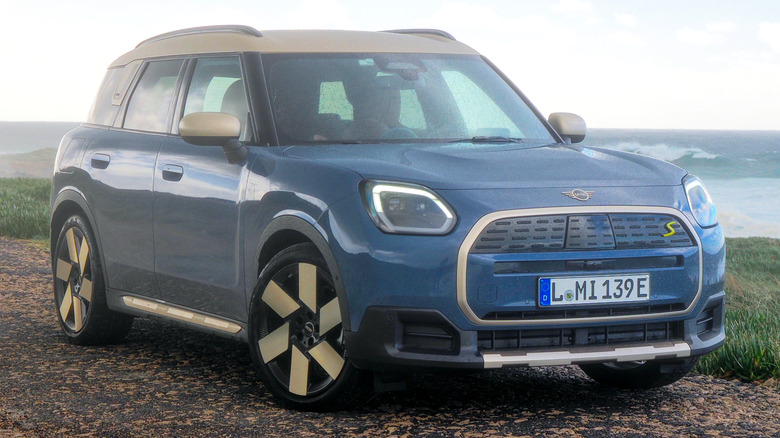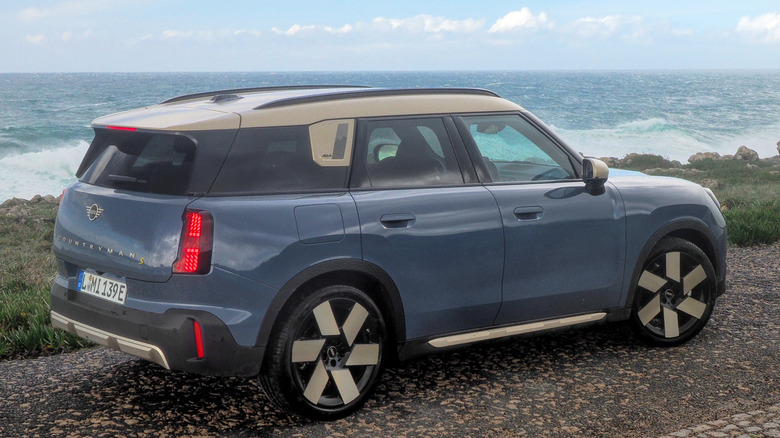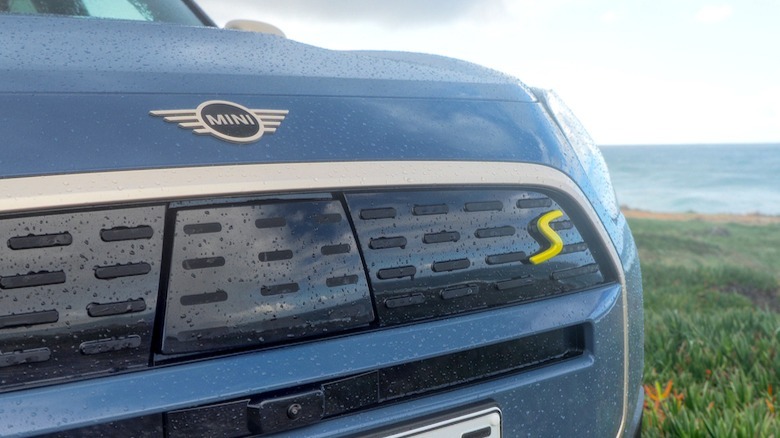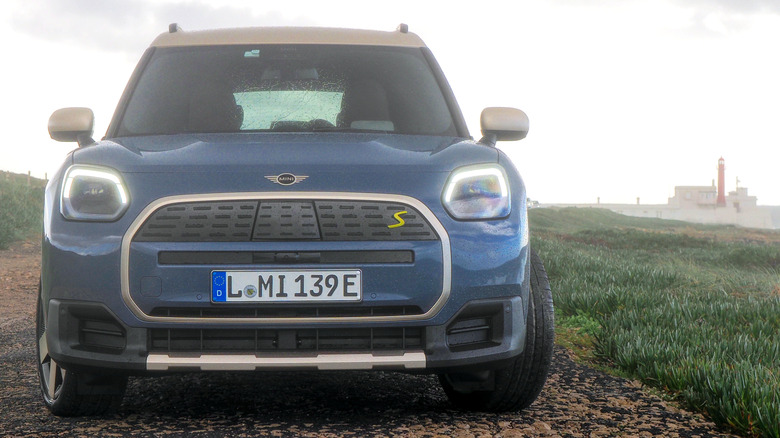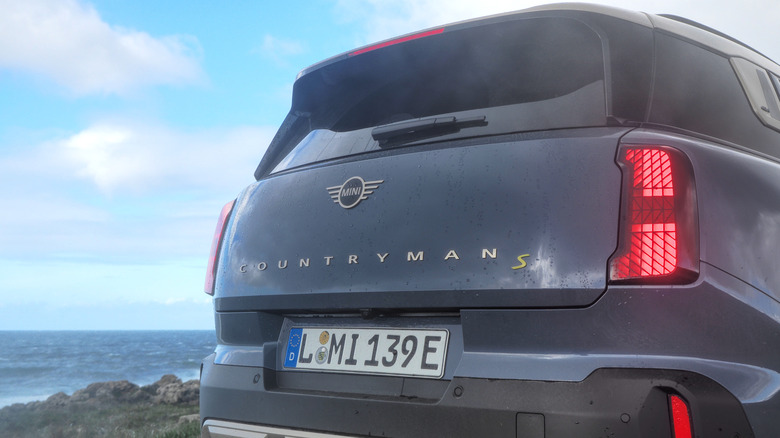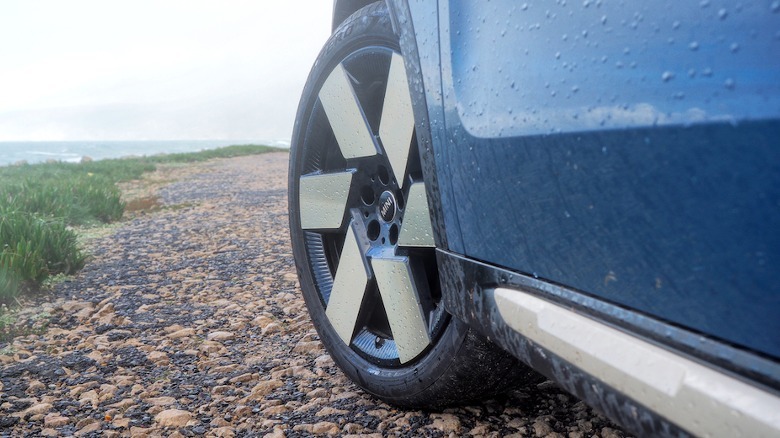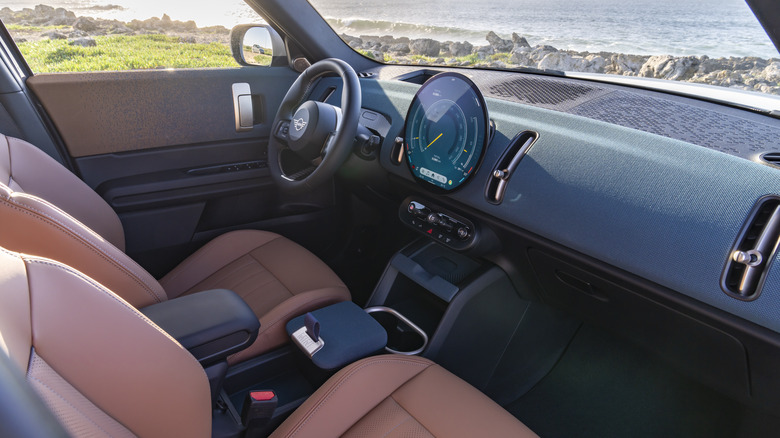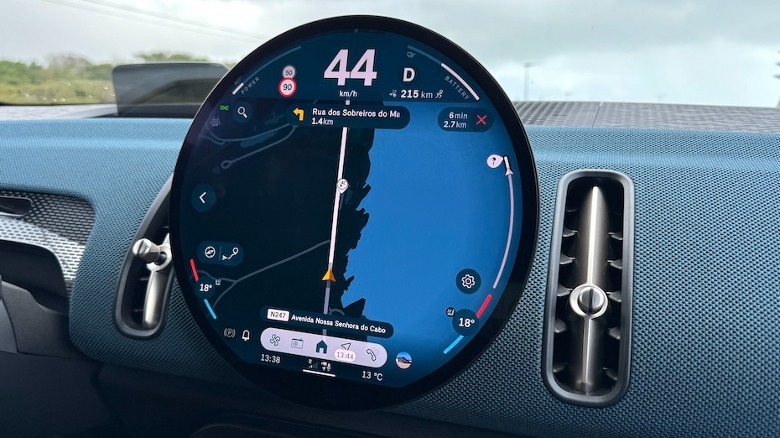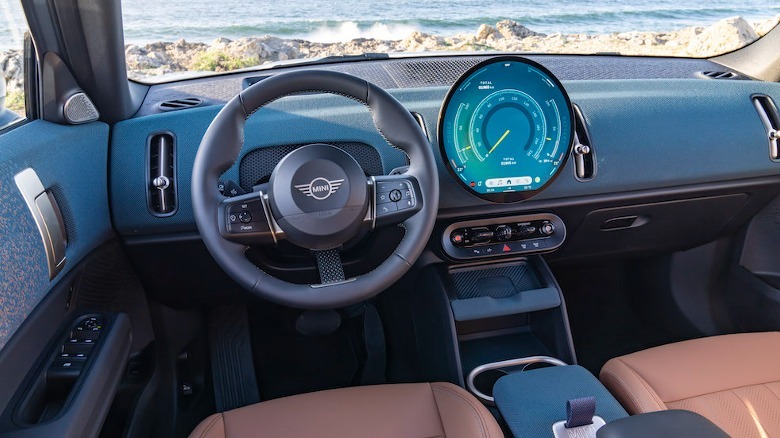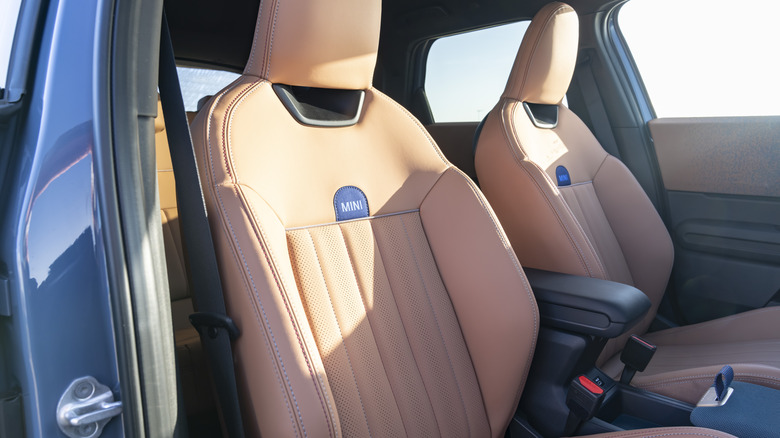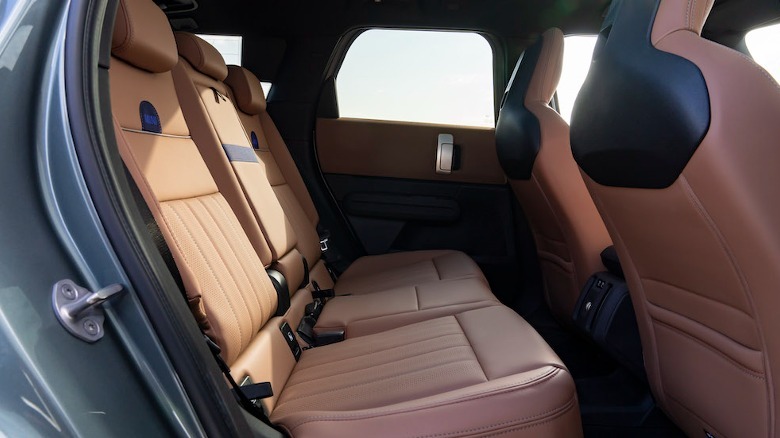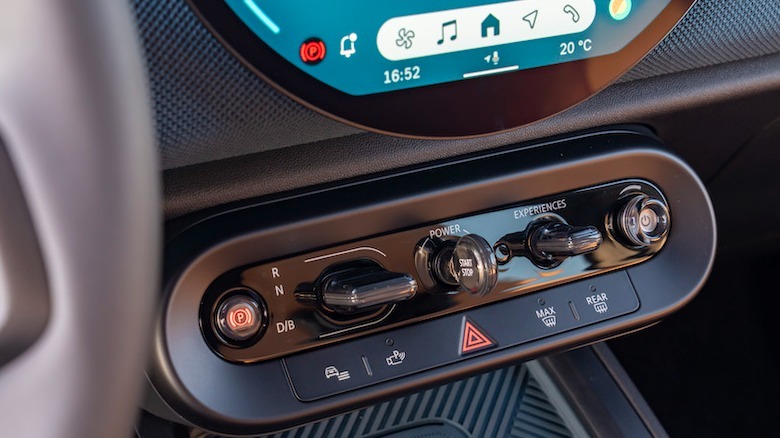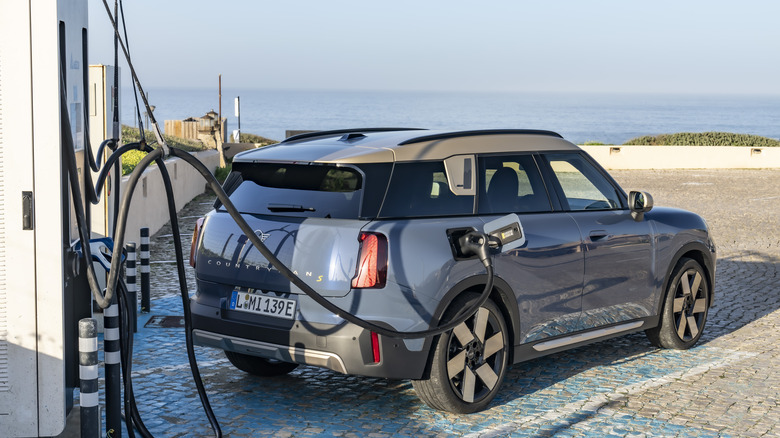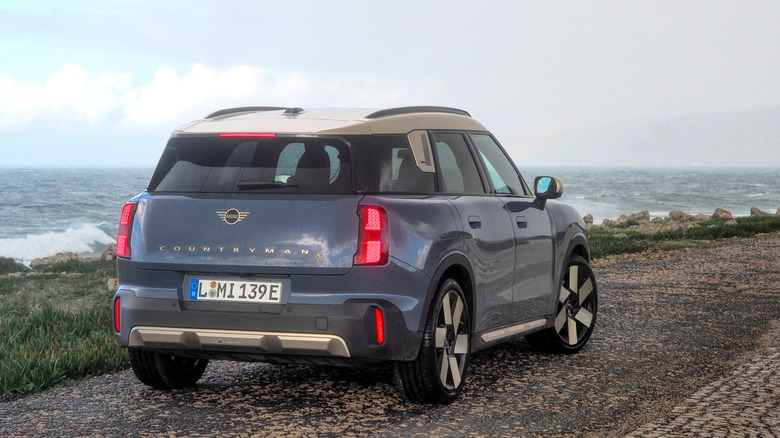2025 MINI Countryman SE ALL4 First Drive: Bigger Crossover, Better Value
Of the three-strong 2025 MINI Countryman range, it's the all-electric model that is undoubtedly the most interesting. Though it may not be the automaker's first full-EV, when it lands in U.S. dealerships this fall, it'll be the first of the Countryman series to ditch internal combustion altogether. That, along with this third-generation's uptick in practicality, could give MINI a strong competitor in a family crossover sweet spot.
The 2025 MINI Countryman SE ALL4 replaces the old plug-in hybrid version of the crossover, which though perky, never quite stood out among PHEVs with its mere 17 miles of range. This all-electric upgrade fixes that, with an estimated 245 miles of driving between charges. It also follows the 2025 Countryman JCW and Countryman S ALL4 in scaling up in size to satisfy not-unreasonable demands for more space and a fancier cabin.
Where retro personality alone may have made MINI buoyant at one point, these days it takes more to stand out of the crowd — especially in the face of some compelling compact electric crossovers. The new Countryman SE ALL4 may be bigger, then, but is it significantly better?
Less cute
While previous MINI models have looked cutesy and approachable, the new 2025 Countryman SE ALL4 has a more frowning fascia. The octagonal grille and more angular headlamps dial back the softness that MINI carried over from its pre-BMW namesakes, while the neon green "S" on the front highlights the fact that this is the electric model.
From the side, a chunkier contrast roof and larger C-pillar detailing help disguise some of the increase in heft for this generation. Perhaps it's the rear which is most successful, though, with its customizable LED taillight clusters. They, with the lower valance, make for less of the "pinched and upright" look that I think the Countryman JCW struggles with.
20-inch alloy wheels have a striking food-processor-blade design — which MINI says is also aerodynamically optimized — and manage to avoid being too flashy. All in all, it's a more grown-up interpretation of what a MINI should look like, even if it might have lost a little of the approachability along the way.
More grunt
Gone is the JCW's punchy gas engine, too, with a pair of electric motors in its place. The Countryman SE ALL4 gets all-wheel drive as standard, with a total of 313 horsepower and 363 pound-feet of torque. Notably, that is one horse and almost 70 pound-feet more than the John Cooper Works-tuned MINI.
We can blame the extra curb weight — around 750 pounds more for the battery-electric car — for the slower 0-60 mph time. That said, at 5.6 seconds, the MINI EV is only 0.2 seconds slower in that dash than its sporty sibling.
Top speed is lower, too, with the electric car's limiter kicking in at 112 mph versus the 155 mph of the JCW. That's probably annoying for German drivers with their access to de-restricted highways, but barely seems like a consideration for those of us operating under stricter U.S. limits. You'll probably want to watch your right foot, anyway, to stand any chance of coming close to MINI's estimated 245 miles of EPA-estimated range.
Matching the MINI spirit
In fact, it's tough to argue with the reality that electric suits the MINI's spirit — and its probable stomping grounds — so much better. For a start it's charmingly perky, all that torque delivered from the get-go and sending you scurrying away from stop lights and junctions.
Direct steering errs on the light side, and though the JCW's slight sense of remoteness from the road is present here, too; it feels far more acceptable in a nimble EV. Multiple levels of regenerative braking are available, though MINI buries them in an infotainment menu. A quicker way to switch between these levels, such as through steering wheel paddles as other automakers offer, would be nice.
Where the 2025 MINI Countryman JCW feels every inch of its increased dimensions, meanwhile, its electric counterpart shrinks around you. A softer tune for the suspension — to help handle that heavier curb weight, among other things — pays dividends both in dynamics and overall comfort. The Countryman SE ALL4 feels more settled in the corners, and it doesn't threaten to send you to a chiropractor like the aggressively stiff JCW.
On a track — or in a series of sweeping back roads that lacked the aggressively cavalier oncoming trucks commonplace in Lisbon, where MINI invited SlashGear to try out the new Countryman — the John Cooper Works would undoubtedly be faster and probably more rewarding for a keen driver.
In the real world, though, the point-and-squirt eagerness of the Countryman SE is just more playful. It feels like what it is: An electric crossover with added whimsy rather than aggressively trying to be both practical and sporty.
A big dashboard makeover
As in the gas Countryman, the new EV's dashboard is dominated by a gadget-y reinterpretation of the old MINI instrumentation. The 9.4-inch circular OLED touchscreen features MINI's own Operating System 9 interface, entirely reworked to suit the unusual aspect of the display. A head-up display — the screen for which powers up out of the dash — is optional, while a comprehensive (but periodically confused) voice control system is standard.
There's a learning curve to the new infotainment, primarily because of MINI's designers taking full liberty of the circular real-estate for icons and graphics. That there are eight different "MINI Experience Modes" — toggled through via a dedicated switch on the scant row of physical controls underneath — each dramatically altering that layout also makes things tricky. In places like adjusting the HVAC, what seem like obvious touch interactions don't necessarily work like you'd expect them to.
There's wireless Apple CarPlay and Android Auto support, and an optional embedded modem for native streaming apps. More gimmicky are the light projectors beaming Experience Mode-themed colors and patterns on the fabric-wrapped dashboard. That certainly looks the part — and makes plentiful use of recycled materials — though the rough feel definitely prioritizes easier cleaning than premium touch. Elements like the vent controls and door handles look like metal, but feel decidedly plasticky.
Extra space to suit growing families
The big advantage to the new Countryman's cabin, of course, is the uptick in space. MINI's argument for its crossover's increasing dimensions is, in part, that existing owners had previously been forced to switch brands in order to comfortably accommodate their growing families. Despite the implication from the badge above the grille, the Countryman needed to scale up accordingly.
It's the rear seats where that pays the biggest dividends, though a wider cabin does make the front seats feel more spacious. Adults dispatched to the second row should have fewer complaints, and the panoramic roof option helps keep things light and airy. The rear bench splits and folds, and trunk space is larger compared to the old Countryman.
Cabin cubbies and storage are increased versus the old car, not least from moving the transmission selector to the bank of toggles so that there's more usable space between the front seats.
Broader charging access still to come
When it comes to topping up the 66.5 kWh battery — of which MINI makes 64.6 kWh usable — there's up to 130 kW DC fast charging support at Level 3 stations. That's lower than a lot of new EVs support; BMW's own i4, for instance, can handle up to 180 kW. However the Countryman SE ALL4's relatively small battery makes it less of a bottleneck, and so a 10-80% charge should take under half an hour.
As you'd expect, there's control over cabin preconditioning, charge scheduling, and remote lock/unlock from the MINI app. Useful stuff, but table-stakes for EVs these days. More notable is the addition of Plug & Charge, which — at compatible public stations — can initiate a charging session complete with payment details simply by plugging the Countryman SE ALL4 in.
At some point, electric MINI drivers will get access to the Tesla Supercharger network as well. Existing owners will need a NACS to CCS adapter in order to plug their EV in — like the one Ford recently announced for the F-150 Lightning and Mustang Mach-E — though from 2025, there'll be a switch (for North American models, at least) to the NACS socket on new electric BMW and MINI cars.
2025 MINI Countryman SE ALL4 Verdict
The old MINI Countryman's big issue, arguably, was that it demanded sacrificing flexibility and affordability compared to rivals in return for its distinctive style. With this new, larger generation, MINI has addressed some of the day-to-day usefulness complaints and given the technology a welcome upgrade, helping to justify the 2025 Countryman SE ALL4's $45,200 (plus destination) starting price.
For EVs more specifically, the most obvious alternative would be the BMW iX2 (which shares a platform with the MINI, and with the 2024 BMW X2 we also recently drove), only the automaker has decided not to bring that to North America. An Audi Q4 e-tron has similar range, though a higher starting price; the Genesis GV60 is more fun to drive than the MINI, but more expensive still. Mercedes' EQB is more costly and down on range, while Tesla's Model Y, Kia's EV6, and Volvo's C40 Recharge arguably lack the Countryman's personality and prestige.
Offered a choice between the 2025 Countryman SE ALL4 or the Countryman JCW, I'd absolutely go for the electric model. As well as being slightly cheaper, it also feels more livable-with. While some rival EVs offer more range, the MINI's combination of practicality and personality makes it a fun daily driver with far fewer drawbacks than the old Countryman PHEV.
